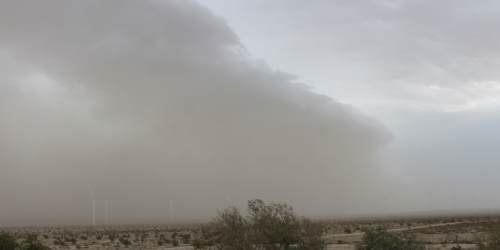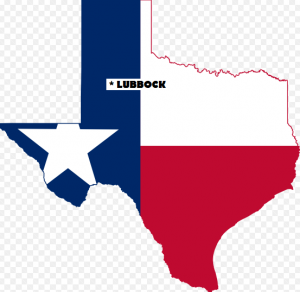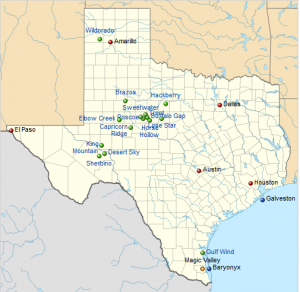
An ECM special investigation continues, finding links between rise in dust storms across outhwest, Valley Fever epidemic, and installation of large-scale desert solar and wind projects
By Miriam Raftery
August 26, 2013 (Ocotillo)--A second dust storm has struck Ocotillo on Auugust 25, just two days after an earlier dust storm swept through the desert community. Dust billowed thousands of feet into the air, dwarfing a 500 foot tall wind turbines scarcely visible in the above photo. East County Magazine photographer Jim Pelley was in the midst of the storm and shot videos:
http://www.youtube.com/watch?v=B7Jz2KQmVZs&feature=youtu.be
http://www.youtube.com/watch?v=2ViBPc25iIE&feature=youtu.be
“I watched this all afternoon from my dinning room window ,” said Diane Tucker, who watched the storm descend from Mount Signal, then northwest to engulf the home of Jim Pelley and others in the area. I didn't get hit here for another 45 minutes after they were engulfed,” Tucker said. “You couldn't even see over there.”
The dust storms that struck Ocotillo originated from the east, coming from Arizona according to witnesses accounts. . In the last 10 years, more than 100 dust storms were reported in the state of Arizona, according to the National Oceanic and Atmospheric Administration. Dust storms have also increased in Texas and others areas of the Southwest.
What’s causing the recent flurry of dust storms? Some blame global warming. But there’s another possible explanation. An ECM report finds a correlation between construction of industrial-scale wind and solar projects that scrape bare the desert soil, and outbreaks of dust storms.
Since 2007, Arizona has added over 600 megawatts of industrial solar power – including over 500 megawatts in 2010 and 2011, shortly before the massive Phoenix dust storm, called a “haboob” after the dust storms in the Sahara, made national news. Arizona had also just completed its first industrial-scale wind farm, Dry Lake Wind in Mojave County northeast of Phoenix, shortly before the haboob struck.
In October 2011, Lubbock, Texas was hit by the worst dust storm to strike in the U.S. in decades. Lubbock is close to several industrial-scale wind projects including the world’s largest wind farm, Roscoe, which has 627 wind turbines. Combined, the wind projects near Lubbock have many thousands of wind turbines – and each one required massive grading and excavation of fragile desert soils. See maps below of Lubbock (1) and Texas wind farms (2):


Edie Harmon, a wildlife biologist, had this to say after viewing photos of the Ocotillo dust storm. “ Looks like the dustbowl or haboob dust storms that hit Arizona,” she said, noting that such storms can be associated with “increased exposures to valley fever fungal spores if there had sometime earlier had been rains.”
Valley Fever concerns have also been raised by Kevin Emmerich of Basin and Ranch Watch, an environmental organization. Emmerich is concerned that large-scale wind and solar projects are increasing not only dust storms that can cause respiratory problems, but also exposure to Valley Fever, a potentially deadly illness. He sent a photo of dust at Nexera’s Genesis Solar project in Riverside county, California.
“ Perfect storm scenario on this one too. It is about 3,000 acres of 100 percent grading,” he wrote, adding that winds were gusting at 35 mph during the construction he observed, yet construction was not halted. “Right on or next to Ford Dry Lake which has very fine particulate dust. The wind was gusting 35 MPH that day. The BLM told me that Nextera (Genesis builders) had a 30 MPH wind cutoff speed for the project meaning construction is supposed to be halted during high wind, but they were out there that day. This is common out there. It is so bad, you can’t see through the dust. And this is an area that has had several Valley Fever incidents.”
Valley fever symptoms develop after one to four weeks and can include fever, muscle ache, cough, headache, shortness of breath, tiredness, and skin outbreaks. Severe cases can result in death particularly in vulnerable individuals such as those with compromised immune systems and the elderly. A blood test is required to diagnose the disease.Dust storms have potential to blow Valley Fever spores hundreds of miles from where they originated.
During the Cedar Fire, Valley Fire was diagnosed among patients in Chula Vista, believed to have blown in from desert areas during the firestorm. With multiple industrial-scale wind and solar projects planned in San Diego’s East County on high desert and agricultural lands, the potential for dust storms that could reach San Diego exists but has been largely blown off by officials approving wind and solar projects.







Recent comments